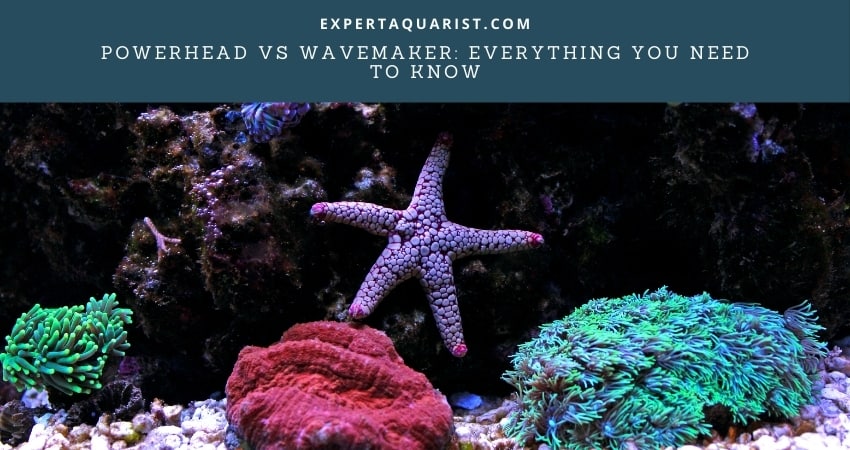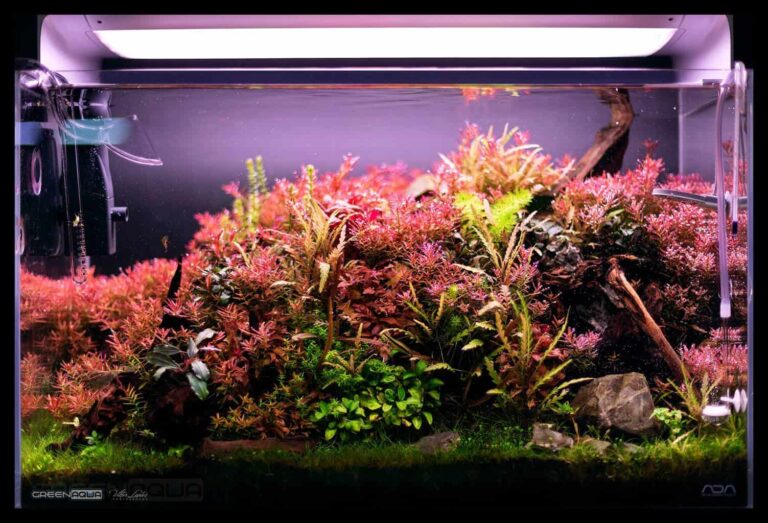In an aquarium, there are different kinds of fish from different ecosystems. It looks absolutely beautiful to watch them playing. One thing they all have in common is that they all love waves and currents. That’s why owners try to replicate it using artificial means.
Powerheads and wavemakers are two tools through which you can simulate waves and currents in your aquarium. A powerhead moves water throughout the reservoir to create flow. While a wavemaker makes waves which is essential for fish and animals who come from rivers and oceans.
There are different uses for these two different machines. Let me help you to choose by making a comparative analysis of powerhead vs wavemaker.
Powerhead vs Wavemaker: Everything you need to know
Both the powerhead and wavemaker are used for keeping the tanks clean and healthy and simulate the animals’ natural habitat. So, how do you pick one over the other?

Let’s take a look at how these machines work to help you make up your mind.
Powerhead
A powerhead is a submersible electrical appliance used for creating a flow of water. Although some people mistake it as a pump, neither it is a pump, nor does it work like one. It creates a uniform one-directional flow from the rear of the reservoir so that the water hits the front.
In addition to creating flow all over the aquarium, the powerhead also creates heat in all corners of the tank. As a result, fish don’t suffer from being in cold water.
The constant flow of water also ensures the oxygen supply in the tank is maintained 24/7. It won’t allow various waste materials to settle at the bottom of the aquarium. Due to the ever-present flow of water, the debris gets filtered out through the filter, keeping the water clean and healthy.
Another excellent advantage of having a powerhead in your tank is that it creates enough flow for your fish to exercise (whether they want to do it or not is another question) so that fat isn’t deposited around their liver and heart, keeping them healthy.
Sometimes you might have a good filtration setup for your pond, but there might not be enough circulation, then what’d happen is the water that is far from the filters- especially on the corners of the pond won’t get filtered enough properly.
As good a machine as the powerhead is, you have to look out for a couple of things. If you have small fish, it’s better not to use a powerhead as its waves are too strong and in turn, dangerous for them. Also, your electric bill is going to go pretty high while using this.
Here’s a quick summary of their perks and drawbacks:
Pros:
- Helps in smooth circulation of water
- Animals who don’t move much will have an easy access to food
- Detritus can’t settle and gets filtered out due to the strong flow of water
Cons:
- Uses a huge amount of electricity, skyrocketing your electric bill.
Wavemaker
A wavemaker is an electrical unit to simulate waves and currents in an aquarium so that the fishes from various ecosystems, especially larger ones, feel comfortable in the tank. It circulates water in the whole tank in the form of waves that flow in all different directions which resemble rivers and oceans.
When there are rocks in an aquarium, it’s easy for some pockets to be created which are full of stagnant water, germs, and other things detrimental to the health of the fish and the overall environment of the tank. A wavemaker takes care of that situation as waves created by it will remove any such pockets and their contents.
It also increases the oxygen flow of your reservoir as the constant currents make sure more and more oxygen is produced and supplied throughout the aquarium.
Debris and waste materials are not allowed to be deposited at the bottom as the waves unsettle them and they are then filtered out.
As fish love waves, they can easily move through the water allowing them to exercise while keeping them healthy and happy.
But watch out for noise, as some wavemakers can be extremely noisy. Also, they may shorten the pump’s lifespan.
Pros:
- Makes waves resembling natural water movements which is essential for the fish
- The waves and currents offer exercise to the fish keeping them healthy.
- Doesn’t allow detritus to settle.
Cons:
- Can be extremely noisy in and around your pond.
Similarities between Powerhead and Wavemaker
- Create some form of water movement
- Help filter out detritus
- Offer exercises to the fish which helps to keep them healthy.
- Animals have ample opportunity to feed because of the movement created by both of them.
Powerhead vs Wavemaker: The Differences
- A powerhead creates a unidirectional current while a wavemaker creates current flowing in all directions.
- Wavemakers are more economical compared to powerheads as they consume way less electricity than the latter.
Which one should you use?
As evident from the above discussion, both of them have a lot in common. But at the same time, both of them have different uses.
Let’s do a quick recap:
A powerhead is simply an underwater pump that creates water movement for your pond by using energy. The water movement helps to oxygenate the water and limit algae growth.
Wavemakers work in a similar way but use less electricity to create waves on the surface of your pond which then move down into the deeper parts as well as all around the edges.
So, looking at them, I would personally recommend wavemakers as they are more versatile, consume less electricity and all in all provide great value for money.
Pick wisely
I’m not sure about you, but choosing which one is better between a powerhead vs wavemaker was one of the hardest decisions I’ve made.
Both the powerhead and wavemaker are exceptionally good electrical units to keep a fish tank clean and healthy. Despite there being some drawbacks to each of them, they come in handy in keeping your fish and other animals healthy.
I tried to provide valid reasons to pick both of them, now it’s up to you.






